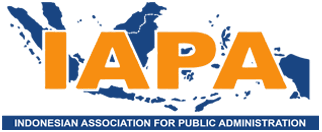Health information inequalities and child healthcare: Evidence from Indonesia National Socio-Economic Survey 2013
DOI:
https://doi.org/10.21776/ub.jpas.2018.003.01.8Keywords:
Health information inequalities, child healthcare, IndonesiaAbstract
This study for the first time examines the relationship between health information inequalities and child healthcare access in Indonesia, a developing country has been cited as one biggest emerging Internet users in the world. Data come from the Indonesian National Socio-Economic Survey (Susenas) 2013, which comprises 1.25 million individuals, 250 thousands households, and 497 districts. The results of descriptive and instrumental variable analysis indicate trend of widening disparities across socio-economic status and geographical areas in Internet and child immunisation access. A strong evidence for the causal flow running from a mother’s access to Internet to child immunisation is found. All instruments are highly correlated with mother’s access to Internet but uncorrelated with child immunisation. Supply factors across districts – particularly village health posts (posyandu) – are associated with child immunisation. The results are robust against individual, household and district socio-economic characteristics associated with child immunisation access. The results suggest that increasing mother’s access to Internet may bridge child immunisation disparities in Indonesia.
References
Akita, T. and Lukman, R.A. (1995). Interregional inequalities in Indonesia: a sectoral decomposition analysis for 1975–92. Bulletin of Indonesian Economic Studies,31(2),61-8.
Barry, M (2013). Internet access is a vital healthcare tool. Reuters news.
Baum, C. F. (2006). An introduction to modern econometrics using Stata. Texas: Stata Press
Bernhardt, J.M. (2000). Health education and the digital divide: Building bridges and filling chasms. Health Education Research,15:527–531.
Bernhardt, J.M. and Felter, EM (2004). Online pediatric information seeking among mothers of young children: Results from a qualitative study using Focus Groups. Journal of Medical Internet Research, 6(1).
Biro Pusat Statistik. (2009). Susenas guide book 2009, Jakarta: BPS Indonesia.
Biro Pusat Statistik. (2010). Susenas guide book 2010, Jakarta: BPS Indonesia.
Brendryen, H. and Kraft, P. (2008) Happy ending: a randomized controlled trial of a digital multi-media smoking cessation intervention. Addiction, 103:478–84.
Curioso, W. (2006). New technologies and public health in developing countries: The cell PREVEN Project. In M. Murero, and R. Rice (Eds.), The Internet and Health Care: Theory Research and Practice. Mahwah, NJ: Lawrence Erlbaum Associates.
D’Hombres, B., Rocco, L., Suhrcke, M., and McKee, M. (2010). Does social capital determine health? Evidence from eight transition countries. Health Economics, 19(1), 56e74.
Deaton, A. and Zaidi, S. (2002). Guidelines for constructing consumption aggregates for welfare analysis. Washington DC: World Bank.
Donner, J. (2004). Innovations in mobile-based public health information systems in the developing world: An example from Rwanda, Mobile Technologies and Health: Benefits and Risks. Udine, Italy.
Duflo, E. and Udry, C (2004). Intra-household resource allocation in Cote d’Ivoire: Social norms, separate accounts and consumption choices. NBER Working Paper 10498.
Durlauf, S., and Fafchamps, M. (2005). Social capital. In S. Durlauf, and P. Aghion (Eds.). Handbook of economic growth, Vol. IB, . Amsterdam: North Holland.
Hall, AK., Bernhardt, JM, Dodd, V., and Vollrath, MW (2014) The digital health divide: Evaluating online health information access and use among older adults. Health Education Behavior, 42(2): 202–209.
Hill, H. (1996). The Indonesian economy since 1966: Southeast Asia’s emerging giant. Cambridge: Cambridge University Press.
Hill, H., Resosudarmo, B., and Vidyattama, Y. (2008). Indonesia’s changing economic geography. Bulletin of Indonesian Economic Studies, 44(3), 407-35.
Hoddinott, J. and Haddad, L. (1995). Does female income share influence household expenditures? Evidence From Cˆote D’Ivoire. Oxford Bulletin of Economics and Statistics 57 (1): 77–96.
Jackson, P.B. (2005) Health inequalities among minority populations, Journal Gerontology B Psychol Sci Soc Sci, 60 (2): S63-S67.
Kaplan, W.A. (2006). Can the ubiquitous power of mobile phones be used to improve health outcomes in developing countries? Globalization and Health, 2(9), Open Access (pp.1-14).
Kawachi I. (2000) Income inequality and health. In: Berkman LF, Kawachi I, eds. Social epidemiology. New York, NY: Oxford University Press.
Kawachi, I and Kennedy, BP. (2003) The health of nations. New York, NY: The New Press
Kontos, E., Blake, KD., Chou, WY, Prestin, A. (2012) Predictors of eHealth usage: Insights on the digital divide from the health information national trends survey. Journal of Medical Internet Research, 16(7).
Kotento, J. (2013, April 18). The doctors will see you now: How the Internet and social media are changing healthcare. Retrieved from http://www.digitaltrends.com/social-media/the-internet-and-healthcare
Kuijpers, W., Groen, W.G., Aaronson, N.K. and van Harten, W.H. (2013) A systematic review of Web-Based Interventions for patient empowerment and physical activity in chronic diseases: Relevance for Cancer Survivors. Journal of Medical Internet Research, 15(2).
Lindsay, S., Smith, S., Bellaby, P. and Baker, R. (2009). The health impact of an online heart disease support group: A comparison of moderated versus unmoderated support, Health Education Research, 24(4) 646–654.
Lindsay S, Smith S, and Bell, F. (2007) Tackling the digital divide: Exploring the impact of ICT on managing heart conditions. Journal Information Communication Society, 10: 95–114.
Lindsay S, Bellaby P, and Smith S. (2008) Enabling healthy choices: is information and communication technology the highway to health improvement? An Interdisciplinary Journal for the Social Study of Health, Illness and Medicine, 12: 313–31.
Maharani, A., and Tampubolon, G. (2014) Has decentralisation affected child immunisation status in Indonesia? Global Health Action. DOI:10.3402/gha.v7.24913
Marmot, M. (2005). Social determinants of health inequalities, Lancet, 365(9464), 1099-1104
Nielsen’s Southeast Asian Digital Consumer. (2013). Southeast Asian digital consumer habits. Singapore: Nielsen Company.
Norris, P. (2001), Digital divide: civic engagement, information poverty, and the Internet worldwide, New York: Cambridge University Press
Olson, ME, Elliot, BA., and Renier, C.M. (2010) Impact of income and income inequality on infant health outcomes in the United States. PEDIATRICS, 126.
Resosudarmo, B.P. and Vidyattama, Y. (2006). Regional income disparity in Indonesia: a panel data analysis. ASEAN Economic Bulletin, 23(1), 31-44.
Ravallion, M and Lokshin, M. (2007). Lasting impacts of Indonesia’s financial crisis, Economic Development and Cultural Change, 56(1), 27-56.
Semba RD, de Pee S, Berger SG, Martini E, Ricks MO, and Bloem MW. (2007). Malnutrition and infectious disease morbidity among children missed by the childhood immunisation program in Indonesia. Southeast Asian J Trop Med Public Health, 38: 120-129.
Semiocast, (2013). Internet growth in Asia. France: Semioscast.
Shelton, N., Birkin, M. and Dorling, D. (2007). Where not to live: geographic inequalities in mortality in Britain, 1981–2000, Health and Place, 12 (4), 557–569
Smith PJ, Humiston SG, Marcuse EK, Zhao Z, Dorell CG, Howes C, and Hibbs B. (2011) Parental delay or refusal of vaccine doses, childhood vaccination coverage at 24 months of age, and the health belief model. Public Health Reports, 126 (Suppl 2):S135–S146
Smith, A, Yarwood, J and Salisbury, DM (2007). Tracking mothers’ attitudes to MMR immunisation 1996-2006. Vaccine; 25: 3996-4002.
Subramanian, SV and Kawachi, I, 2004. Income inequality and health: What have we learned so far? Epidemiol Rev (26) 78–91
Sujarwoto, S. and Tampubolon, G. (2015). Spatial inequality and Internet divide in Indonesia. Forthcoming Telecommunication Policy.
Sujarwoto, S. (2012). Political decentralization and local public services performance in Indonesia. Journal of Public Administration and Governance, 2(3), 55-84.
Sujarwoto, S. (2017a). Geography and Communal Conflict in Indonesia. Indonesian Journal of Geography, 49(1), 89-96.
Sujarwoto, S. (2017). Small family norms and family well-being in Indonesia, 2006–2014. Journal of biosocial science, 49(S1), S96-S115.
Sujarwoto, S. (2017b). Why decentralization works and does not works? A systematic literature review. Journal of Public Administration Studies, 1(3), 1-10.
Sujarwoto, S., & Tampubolon, G. (2013). Mother's social capital and child health in Indonesia. Social Science & Medicine, 91, 1-9.
Sujarwoto, S., & Tampubolon, G. (2015a). Decentralisation and citizen happiness: A multilevel analysis of self-rated happiness in Indonesia. Journal of Happiness studies, 16(2), 455-475.
Sujarwoto, S., & Tampubolon, G. (2015b). Inflammatory markers and physical performance in middle-aged and older people in Indonesia. Age and ageing, 44(4), 610-615.
Sujarwoto, S., Tampubolon, G.,& Pierewan, A. C. (2017). Individual and Contextual Factors of Happiness and Life Satisfaction in a Low Middle Income Country. Applied Research in Quality of Life, 1-19.
Sujarwoto, S. (2017). Small family norms and family well-being in Indonesia, 2006–2014. Journal of biosocial science, 49(S1), S96-S115
Susannah, F, Rainie L, Horrigan J, Lenhart A, Spooner T, and Burke M. (2000). The online health care revolution: How the web helps Americans take better care of themselves. Washington DC: Pew Internet and American Life Project.
Stafford, M., Duke-Williams, O. and Shelton, N (2008) Small area inequalities in health: Are we underestimating them? Social Science and Medicine, 67(6) 891-899.
Thomas, D. (1990). Intra-household resource allocation: An inferential approach. Journal of Human Resources, 25(4): 635–664.
Valadez, J.J. and Weld, L.H. (1992) Maternal recall error of child vaccination status in a developing nation. American journal of public health, 82:120-2.
Van Dijk, J.A.G.M. (2012). The evolution of the digital divide: the digital divide turns to inequality of skills and usage. Digital Enlightenment Yearbook 2012.
Viswanath, K (28 January 2014) An unhealthy digital divide. Harvard TH Chan School of Public Health News.
Viswanath K, Kreuter MW. (2007). Health disparities, communication inequalities, and eHealth. Am J Prev Med,. 32(5 Suppl):S131-S133
Vuong, AM., Huber, JC., Bolin, JN., Ory, MG., Moudouni, DM., Helduser, J., Begaye, D., Bonner, TJ., and Forjuoh, SN. (2012). Factors affecting acceptability and usability of technological approaches to diabetes self-management: A Case Study. Diabetes Technol Ther, 14(12): 1178–1182.
Wang JY, Bennett K, and Probst J. (2011). Subdividing the digital divide: differences in internet access and use among rural residents with medical limitations. J Med Internet Res, 13(1):e25
Weeks, JR., Hill, AG. and Stoler, J. (2014) Spatial inequalities: Health, poverty, and place in Accra, Ghana, GeoJournalLibary: Springer Netherlands.
WHO (2009). State of the world’s vaccines and immunization, 3rd ed. Geneva: World Health Organization.
World Bank. (2008). Indonesia economy: strong performance but risks lie ahead. Jakarta: World Bank.
World Bank (2008). Investing in Indonesia’s health: challenges and opportunities for future public spending. Washington DC:World Bank.
World Bank (2014) Internet and development: Preparing the World Development Report 2016. Washington DC: World Bank
Yusuf, A.A, Sumer, A. and Rum, I.A. (2014). Twenty years of expenditure inequality in Indonesia 1993-2013, Bulletin of Indonesian Economic Studies, 50(2), 243-254.
Downloads
Published
Issue
Section
License
Copyright Statement
Authors who publish with JPAS agree to the following terms:
(1). Authors retain copyright and grant the journal right of first publication with the work simultaneously licensed under a Creative Commons Attribution License that allows others to share the work with an acknowledgement of the work's authorship and initial publication in this journal.
(2). Authors are able to enter into separate, additional contractual arrangements for the non-exclusive distribution of the journal's published version of the work (e.g., post it to an institutional repository or publish it in a book), with an acknowledgement of its initial publication in this journal.
(3). Authors are permitted and encouraged to post their work online (e.g., in institutional repositories or on their website) prior to and during the submission process, as it can lead to productive exchanges, as well as earlier and greater citation of published work (See The Effect of Open Access).
Permissions and reuse
For authors
Authors may use their own articles for the following non-commercial purposes without asking our permission (and subject only to acknowledging first publication in JPAS and giving a full reference or web link, as appropriate).
(1). Posting a pdf of their own article on their own personal or institutional website, for which no charge for access is made.
(2). Making a reasonable number of copies for personal or non commercial professional use.
This includes the contributors own teaching purposes.
(1). Republishing part or all of the article in a book or other publication edited by the author (except for multiple contributions in the same book or publication, for which permission needs to be sought.
(2). Using individual figures or tables or extracts of text (up to 300 words) in other publications published by a third party.
(3). Using the article in a course pack or compilation (whether paper or electronic) in the authors institution. This does not apply if a commercial charge is made for the compilation or training programme.
For third parties
All articles published by JPAS are published by default as open access.















